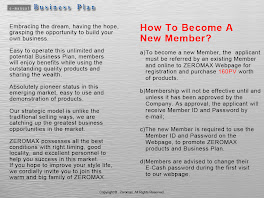Part 1 of this article talked about building rapport and matching your self with the audience. In Part 2, you will learn to intensify the matching process so that your persuasion becomes more potent.
Three types of people
English novelist Aldous Huxley likened your three major representation systems – sight, hearing and feeling – to doors that you open to gather information about the world. Your eyes collect pictures, your ears select sounds, and your feelings are aroused internally as emotions or externally as tactile.
Different people are persuaded by different systems:
1. Visual people
These people organize their world visually. They create new pictures easily to replace old ones. As such, they can easily let go their emotions such as anxiety, sadness and jealously.
The best way to persuade them is through images. Visual aids like slideshows, posters and videos area ideal persuasion tools because these people get bored easily with lectures, radio messages and audio CDs.
Visual people are also very neat and organized. So, your presentation slides must be clear and professionally designed.
When you speak, do not stand too close to them, as they demand a visual space and a field of vision.
About 60% of people can be persuaded visually.
2. Auditory people
These people learn by listening. They process information sequentially, so they think by steps and procedures.
The best way to persuade them is to hold a dialogue, discussion or debate. Radio messages and audio CDs are ideal.
The tonality of your voice plays a significant part. If it sounds good to them, they will be persuaded.
Having the gift of the gab, they usually dominate the conversation and can go at great lengths to explain something.
They are easily distracted by sounds, and they often sigh.
When they listen, they tilt their heads sideways as if they are lending you their ears.
About 20% of people can be persuaded auditorily.
3. Kinesthetic people
These people move and speak slowly with long pauses. They have a problem getting out of negative emotions. They can feel and love deeply.
Learn to get hold of their feeling. For example, when you present, get close to them, as they like proximity and physical contact. Give them a pat or a physical reward.
About 20% of people can be persuaded kinesthetically.
Observe your audience
Raise and direct all your sensory radars – watching, listening, feeling and smelling – towards the people you want to persuade. Be alert all the time, and be aware of subtle changes that tell you more about your audience.
As British poet Siegfried Sassoon wrote “In me the tiger sniff the rose”, you need to be sharp in your senses.
Mind your body language
Keep your posture upright as you talk so that you exude confidence and self-esteem. Look relaxed, with your chest out and head looking slightly up.
Establish and maintain eye contact at all times. It spells truth and sincerity in your persuasion. Roaming eyes convey insincerity and distrust.
Use metaphors
A metaphor is a figure of speech that contains implied comparisons.
In NLP, metaphors include stories, fables, fairy tales, history, personal experiences, illustrations and jokes.
An Italian proverb says: “Tell me a fact and I’ll learn. Tell me the truth and I’ll believe. But tell me a story and it will live in my heart forever.”
The root word for “metaphor” is the Greek word metaphora, which means “to carry across”.
When you explain a theory, your listeners may get bored or close their minds.
But when you tell a story, their minds are more receptive and more “persuadable”. Everyone loves a story.
Metaphors provide tremendous opportunities for rapport building and persuasion.
People can identify themselves in metaphors. It speaks to their unconscious minds.
As they are neutral, metaphors reduce resistance and are less threatening than directive. They can inspire people to overcome their setbacks and stimulate interest in your message.
Be flexible
Try to be flexible in creating more choices in your persuasion so that you can select the right one. The more flexible you are, the more control you have over the outcome of persuasion.
In the book Frogs Into Prince, authors Richard Bandler and John Grinder said that you are a robot if you have only one choice. If you have two choices, you are in a dilemma. If you have three choices, you are flexible.
With more choices, you can choose the best strategy to persuade others. Be flexible in your approach to persuasion.
Source: The Star Newspaper
Article contributed by Michael Lum, a certified American of NLP trainer and coach.
Salaam
Hj Md Hatta
019-3089268
hattabasir@gmail.com
Thursday, January 1, 2009
The Art Of Persuasion - Part 2
Subscribe to:
Post Comments (Atom)












No comments:
Post a Comment